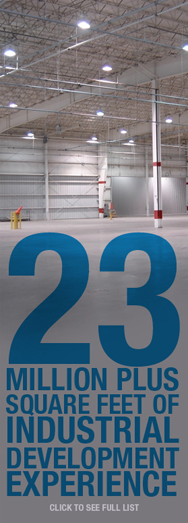U.S. Warehouse Demand Resilient In Face of Slowing Economy
Article Posted By CoStar
Falling Vacancy, Tight Supply Starting to Move Rents Up, But Meaningful Levels of New Construction Not Expected Anytime Soon.
The U.S. industrial real estate market continued to improve during the second quarter of this year even as the economic recovery lost momentum. The industrial market posted strong leasing activity, declining vacancies and diminished supply, which CoStar analysts said should set the stage for an acceleration in net absorption and rising rents in upcoming quarters.
The U.S industrial vacancy rate fell to a two-year low of 9.8%, down significantly from 10.4% a year ago, while most other indicators improved marked in the second quarter, according to CoStar Group Inc.’s Mid-Year 2011 Industrial Outlook and Review.
Although quarterly absorption numbers were modest, the warehouse market has now experienced five consecutive quarters of positive demand totaling 103 million square feet — exceeding the 59 million square feet of net absorption in early 2002 to late 2003 following the previous downturn, which admittedly was much less severe.
However, absorption of warehouse space remains roughly half what analysts would expect given the overall rebound economic growth since early 2010.
“Overall, this is a good, but not great, recovery,” said Jay Spivey, CoStar director of analytics, who co-presented the outlook with Hans Nordby, director of advisory services for CoStar forecasting subsidiary Property & Portfolio Research (PPR), and senior real estate economist Shaw Lupton.
Complicating matters is the U.S. economy, which clearly lost steam in the second quarter. Monthly job growth remains extremely disappointing to economists. Economic output rose at a tepid 1.3% in the second quarter, and the government revised first-quarter GDP growth down to 0.4%. The closely watched Institute of Supply Management (ISM) said Monday its manufacturing index fell to 50.9 in July — the lowest level in two years — down from 55.3 in June.
Nordby noted that corporate profits and output levels remain the silver lining to the glum economic picture and are still growing, albeit not at the strength of previous levels.
“The natural state of the U.S. economy is growth and as of now, we’ve re-attained the peak GDP output of 2008, although it doesn’t feel that good,” Nordby said. He said growth will likely average around 3% over the next couple of years.
CoStar analysts expect that growth, combined with tightening warehouse supply, to result in a quickening of warehouse absorption over the next few years, topping 40 million square feet per quarter through the end of 2014 as vacancy falls to below 7%. Even under a slow growth scenario, the national vacancy rate would fall to a healthy level of just over 8% within three years due to historically low levels of construction.
The second quarter saw the fifth straight quarter of vacancy decline, supported by a tailwind of moderate demand and very few deliveries. Quoted warehouse rents appear to have bottomed and are swinging toward positive growth in many markets.
Factors holding down warehouse absorption include historically low levels of housing construction, a continued overhang of shadow supply — warehouse space that’s leased but underutilized — and continued business uncertainty, noted Lupton.
To Read the entire article, click HERE.


